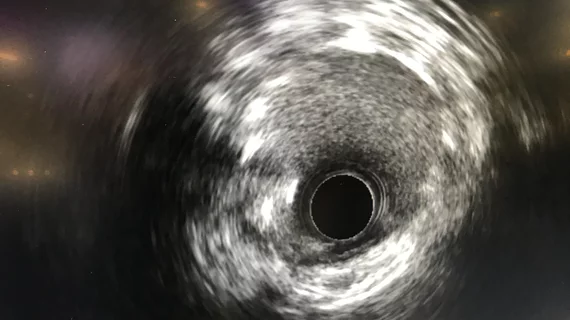IVUS-guided PCI boosts 2-year survival, reduces need for bypass surgery
Using intravascular ultrasound (IVUS) to guide percutaneous coronary intervention (PCI) procedures is associated with a significant improvement in survival after two years, according to new findings published in JSCAI, the official journal of the Society for Cardiovascular Angiography and Interventions (SCAI).[1] IVUS-guided PCI was linked to other key benefits as well, providing even more evidence that intravascular imaging can go a long way toward improving patient care.
The study, which was also presented to attendees at TCT 2023 in San Francisco, included Japanese registry data from more than 8,500 PCI patients treated from September 2008 to December 2017. The mean patient age was 68.3 years old.
Nearly 84% of patients underwent IVUS-guided PCI. The study’s primary outcome—a composite of death, acute coronary syndrome, heart failure hospitalization and coronary artery bypass—was not significantly different after two years among patients who did and did not undergo IVUS-guided PCI. On the other hand, death and coronary bypass were much less common among patients treated with IVUS-guided PCI.
When the authors focused exclusively on patients with complex coronary anatomy, they found that IVUS-guided PCI was linked to a significantly lower risk of the study’s primary outcome. The IVUS strategy also appeared to reduce the individual two-year risks of death, coronary bypass or heart failure hospitalization.
“Our study provides robust evidence supporting the use of IVUS in coronary interventions,” lead author Toshiki Kuno, MD, PhD, a veteran interventional cardiologist from Japan who is now a cardiology fellow with the Montefiore Medical Center, said in an SCAI statement. “By visualizing the coronary arteries in real-time, physicians can accurately assess the severity of the disease and optimize stent placement, ultimately leading to better patient outcomes.”
Click here to read the team’s full analysis in JSCAI.

